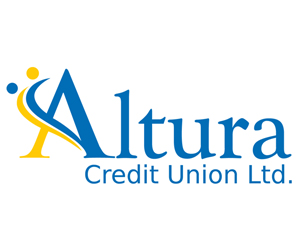Price Waterhouse Cooper report reveals funding crisis in nursing home sector
- Two Wexford nursing home among those closed in the past three years
- 31 nursing homes and 915 beds have closed in the last three years
- 36% increase in the operational cost of care per resident since 2017
- 47% increase in the development costs per bed since 2017 (based on sample development costs)
The magnitude of the threat to sustainability of current and future nursing home provision with incessant cost pressures is further illuminated within a PwC analysis report published today. The independent report, commissioned by Nursing Homes Ireland (NHI), presents nursing home closures are increasing despite playing a pivotal role in the Irish healthcare ecosystem.
Challenges for Nursing Homes in the Provision of Older Persons Care demonstrates in detail how providers are under pressure as they deal with increasingly complex resident profiles and incur rapidly rising operational costs driven by the impact of infection prevention control (IPC) requirements, recent inflationary pressures, and health sector wide staffing shortages.
The independent analysis was commissioned by NHI against the backdrop of 31 private and voluntary nursing home closures and the loss of 915 beds over the last three years. This includes two nursing homes in County Wexford.
The report found that there has been a 36% increase in the operational cost of care per resident since 2017. These cost increases are set against the backdrop of marginal increases to revenue streams in the form of Weekly Fair Deal Rates for residents. This has resulted in a situation whereby 33% of nursing homes surveyed by PwC reported an operating loss in 2022, up from 19% in 2021. Nursing Homes Ireland believes this is unsustainable and more nursing home closures are inevitable without substantial reforms to the pricing model together with an increased Fair Deal budget.
Articulating upon the increase in operational costs, the analysis reports nursing homes are also being tasked with providing care to an increasingly complex resident profile. Ageing demographics and increased use of home support services means that nursing home staff are now caring for a resident that has more complex needs, including being older, of higher dependency, and requiring a greater number of care hours.
The PwC report provides high level recommendations for addressing the issues outlined. In the immediate term, it recommends the provision of the necessary funding to the National Treatment Purchase Fund to enable them to prevent further nursing home closures and to ensure that no more residents lose what is their home. In the longer term, it recommends reform of the Fair Deal Pricing mechanism to enable Fair Deal Rates to be based on resource allocation and resident’s individual care needs. Alongside this is required engagement planning between stakeholders to ensure future bed capacity for Ireland’s ageing population, PwC recommend.
Commenting on the report, Tadhg Daly, Chief Executive of Nursing Homes Ireland, said: “NHI commissioned this independent report to inform regarding the unprecedented crisis our sector is currently going through. Its findings present an uncertain future for the care of our ageing population and our sector. It must serve as a further wake-up call for Government, with PwC presenting a chasm between expenditure incurred and income received under Fair Deal. This on the back of our Open Letter to An Taoiseach in December last to “Save Our Nursing Homes.
It is becoming increasingly unfeasible to operate a nursing home in Ireland, due to rapidly rising costs and only very marginal increases in income stream – which is the result of a Fair Deal Rate pricing mechanism no longer suitable for the current operating environment. Over 20 nursing homes have closed their doors since the beginning of last year.
The sector is in a state of crisis and contraction, with more and more homes and beds closing and not being replaced. This has been particularly prevalent among smaller operators in rural areas to date, but will encapsulate medium-sized and larger operators if the status quo prevails. Urgent intervention is required.
The contraction now in effect is against the backdrop of our older population being the fastest growing in Europe. The analysis presents the immediate threat to existing provision together with a non-viability environment now in effect for the development of additional nursing home capacity, both by existing providers or potential new entrants.
The analysis impresses the need for immediate action on Fair Deal rates to address the crisis and stem further nursing home closures. It also points to the inability of the Weekly Fair Deal Rate pricing mechanism to respond to recent increases in the cost of care, and the need for this to be addressed immediately to ensure the continued health and viability of our sector.”
Outlining the critical role of nursing homes within Irish healthcare, the report presents the crisis in effect has broader implications for Irish society, with nursing homes facilitating the discharge of older persons from acute hospital settings either through long term residential care or step down rehabilitation, which frees up acute bed capacity. According to the ESRI, a 10% increase in per capita nursing home bed supply frees up 53 acute beds daily.
Ireland’s ageing population, combined with the increasing prevalence of chronic diseases such as dementia, will place significant pressure on the healthcare system in the coming years, amplifying the importance of nursing homes. The increased use of home support services has also resulted in individuals staying in their homes for longer, meaning that those entering nursing homes are now older age and of higher dependency.
Declining profitability in the sector due to increasing costs and insufficient revenues coupled with rising interest rates, construction costs and land prices has meant that the business case for additional nursing home provision is no longer commercially viable. The report revealed a 47% increase in the development costs per bed since 2017. The same conditions also provide for current operators to make further investments in nursing home upgrades.

